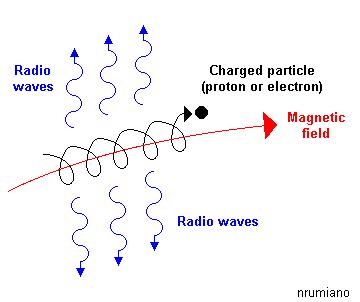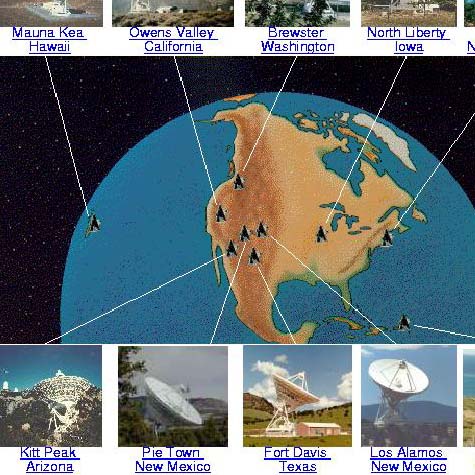Radio Emission of AGN and VLBI

The quasars in the central regions of the powerful Active Galactic Nuclei (AGN) radiate huge amounts of energy, making the strongest AGN about 105 times more luminous than an entire normal galaxy such as the Milky Way. Radio-loud AGN can emit several million times more radio energy than a normal galaxy, and their radio energy can exceed the total energy produced by a normal galaxy at all wavelengths by an order of magnitude. This radio emission, and in some cases an appreciable fraction of the emission at higher frequencies, is synchrotron radiation, which is emitted by relativistic electrons when they spiral in magnetic fields. The source of this phenomenal energy is believed to be the gravitational energy released by matter accreting onto a supermassive (~109 times the mass of the Sun) black hole at the galactic centre. One manifestation of the central activity is the ejection of oppositely directed, powerful "jets" of plasma moving outward from the galactic centre at relativistic speeds, which we study in the Active Galactic Nuclei and Radio Astronomy group at UCC. The strongest AGN tend to be very distant objects: the Doppler redshifts produced by their motion away from the Sun due to the cosmological expansion of the Universe can reach z ~ 5, corresponding to a recessional velocity exceeding 0.94c.
Radio Emission of VLBI

On the parsec scales probed by VLBI, the radio emitting regions of radio-loud AGN usually display a one-sided "core+jet" structure. The intrinsic is believed to be two-sided, with the two oppositely directed relativistic jet outflows both being highly "beamed" in the forward direction of their motion. If the jet axis is orientated at a small angle to the line of sight, as we believe to be the case for these objects, the observed brightness of the approaching jet is boosted, while that of the receding jet is "deboosted", giving rise to the observed one-sided structure. This geometry can also explain the apparent "superluminal" motions that are observed for individual outflowing knots in the radio jets. It is thought that the radio jets are probably ejected along the rotational axis of the central black hole, roughly perpendicular to the plane of an accretion disk surrounding the black hole.
The intrinsic linear polarization of synchrotron radiation can reach about 75% in the case of a uniform magnetic field and a random pitch-angle distribution for the radiating electrons. VLBI polarization measurements are a unique source of information about the jet B fields, as well as the densities of relativistic and thermal electrons in and around the radio-emitting regions.
